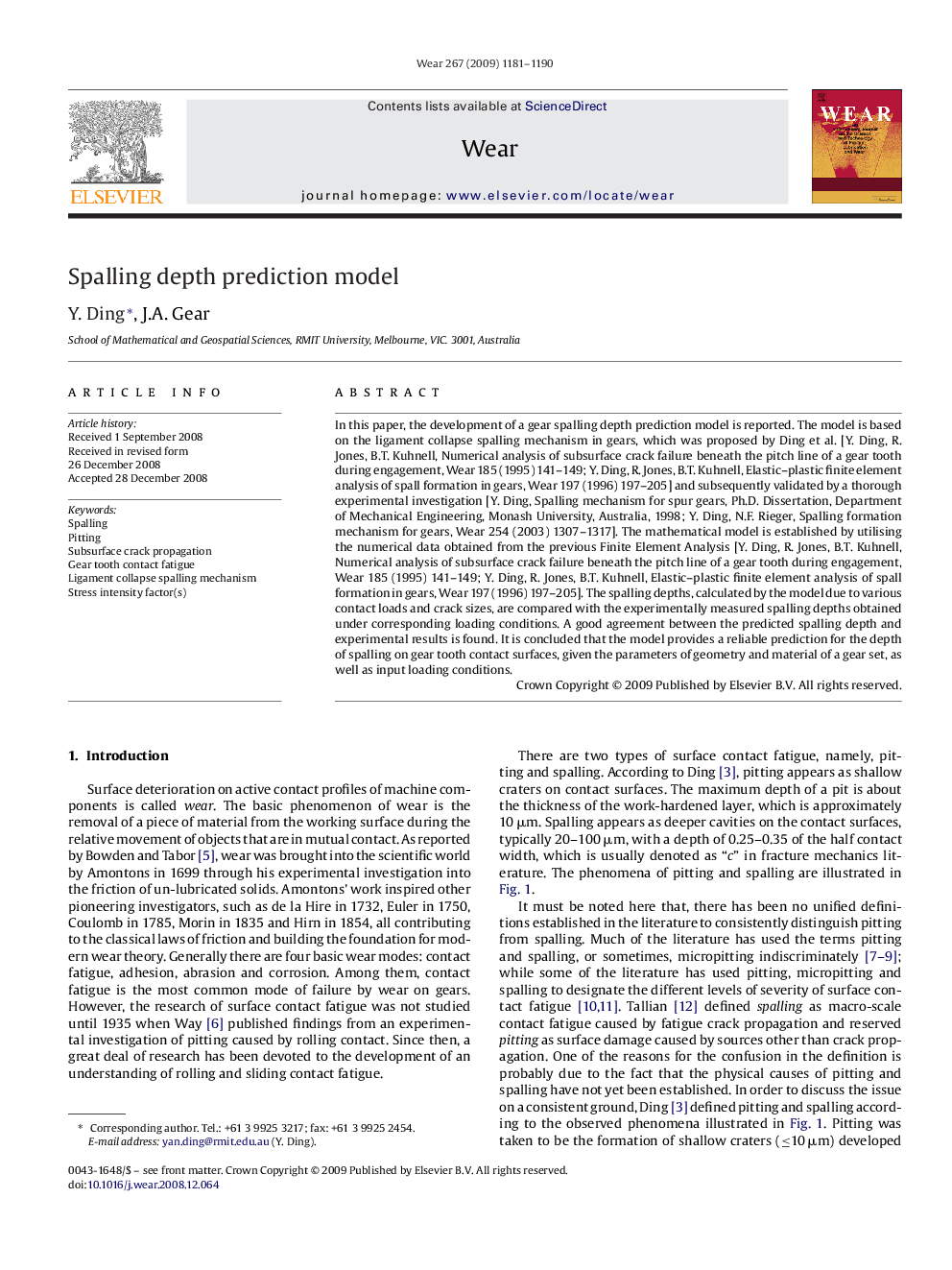| Article ID | Journal | Published Year | Pages | File Type |
|---|---|---|---|---|
| 619383 | Wear | 2009 | 10 Pages |
In this paper, the development of a gear spalling depth prediction model is reported. The model is based on the ligament collapse spalling mechanism in gears, which was proposed by Ding et al. [Y. Ding, R. Jones, B.T. Kuhnell, Numerical analysis of subsurface crack failure beneath the pitch line of a gear tooth during engagement, Wear 185 (1995) 141–149; Y. Ding, R. Jones, B.T. Kuhnell, Elastic–plastic finite element analysis of spall formation in gears, Wear 197 (1996) 197–205] and subsequently validated by a thorough experimental investigation [Y. Ding, Spalling mechanism for spur gears, Ph.D. Dissertation, Department of Mechanical Engineering, Monash University, Australia, 1998; Y. Ding, N.F. Rieger, Spalling formation mechanism for gears, Wear 254 (2003) 1307–1317]. The mathematical model is established by utilising the numerical data obtained from the previous Finite Element Analysis [Y. Ding, R. Jones, B.T. Kuhnell, Numerical analysis of subsurface crack failure beneath the pitch line of a gear tooth during engagement, Wear 185 (1995) 141–149; Y. Ding, R. Jones, B.T. Kuhnell, Elastic–plastic finite element analysis of spall formation in gears, Wear 197 (1996) 197–205]. The spalling depths, calculated by the model due to various contact loads and crack sizes, are compared with the experimentally measured spalling depths obtained under corresponding loading conditions. A good agreement between the predicted spalling depth and experimental results is found. It is concluded that the model provides a reliable prediction for the depth of spalling on gear tooth contact surfaces, given the parameters of geometry and material of a gear set, as well as input loading conditions.
